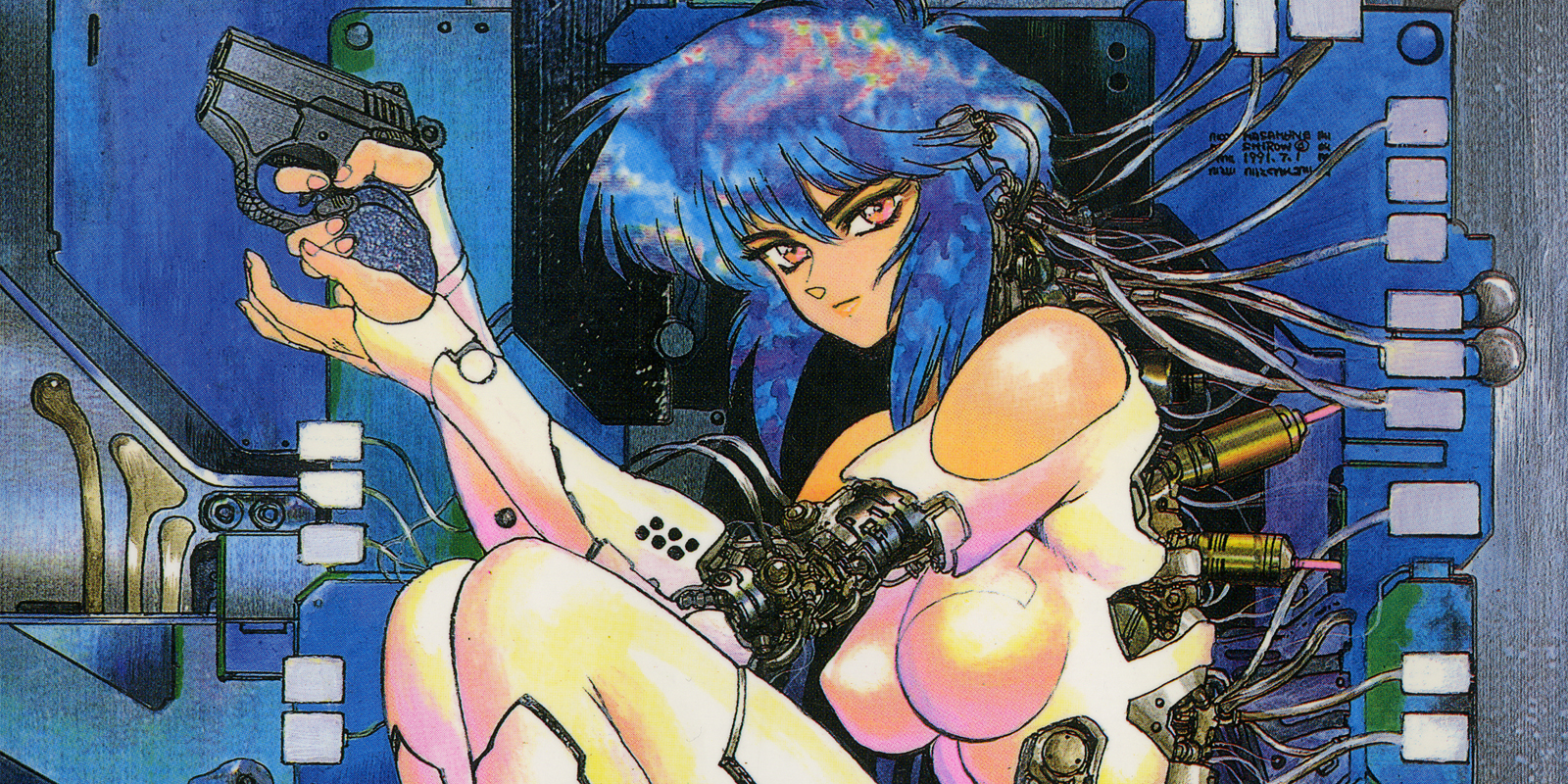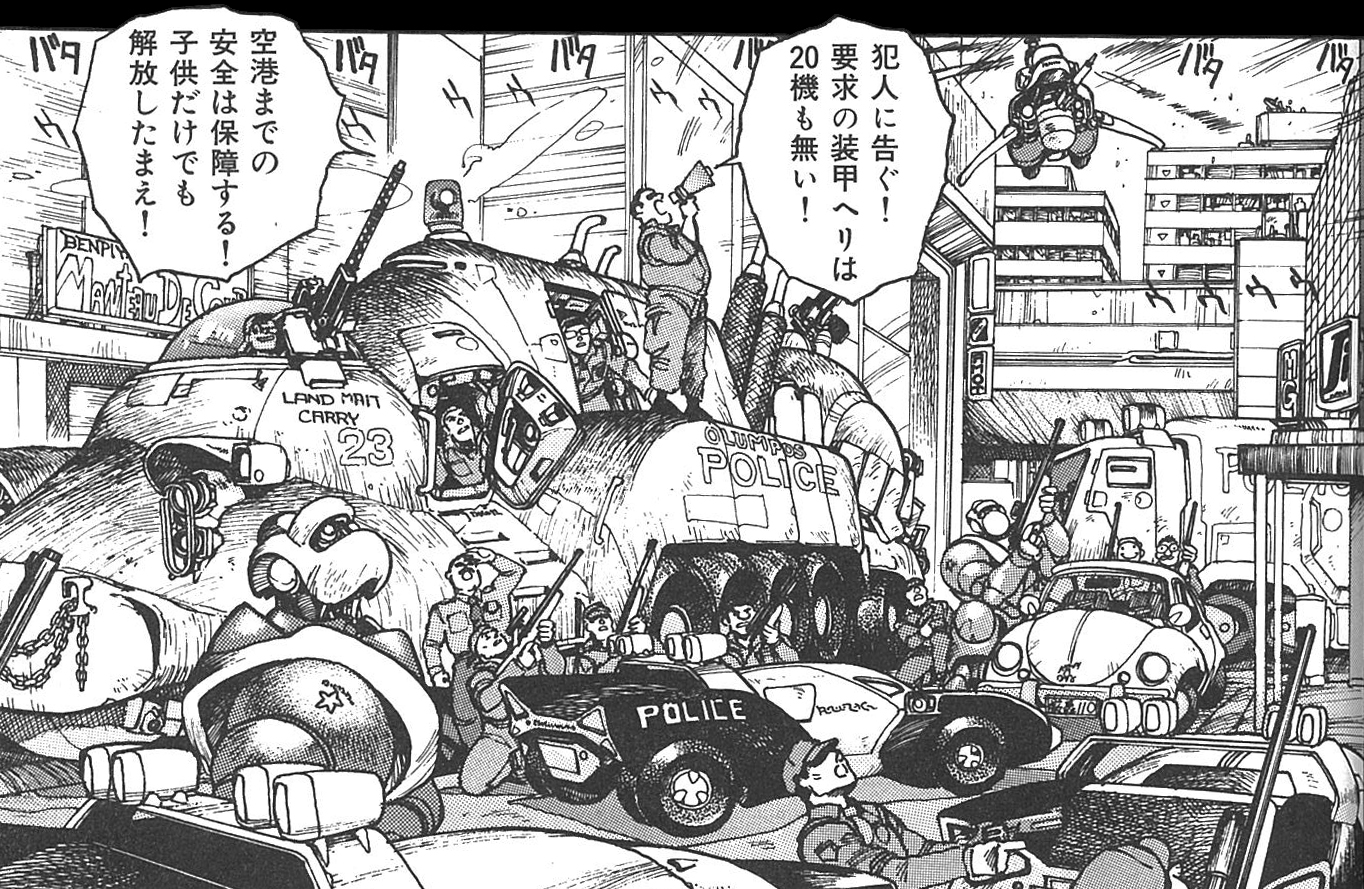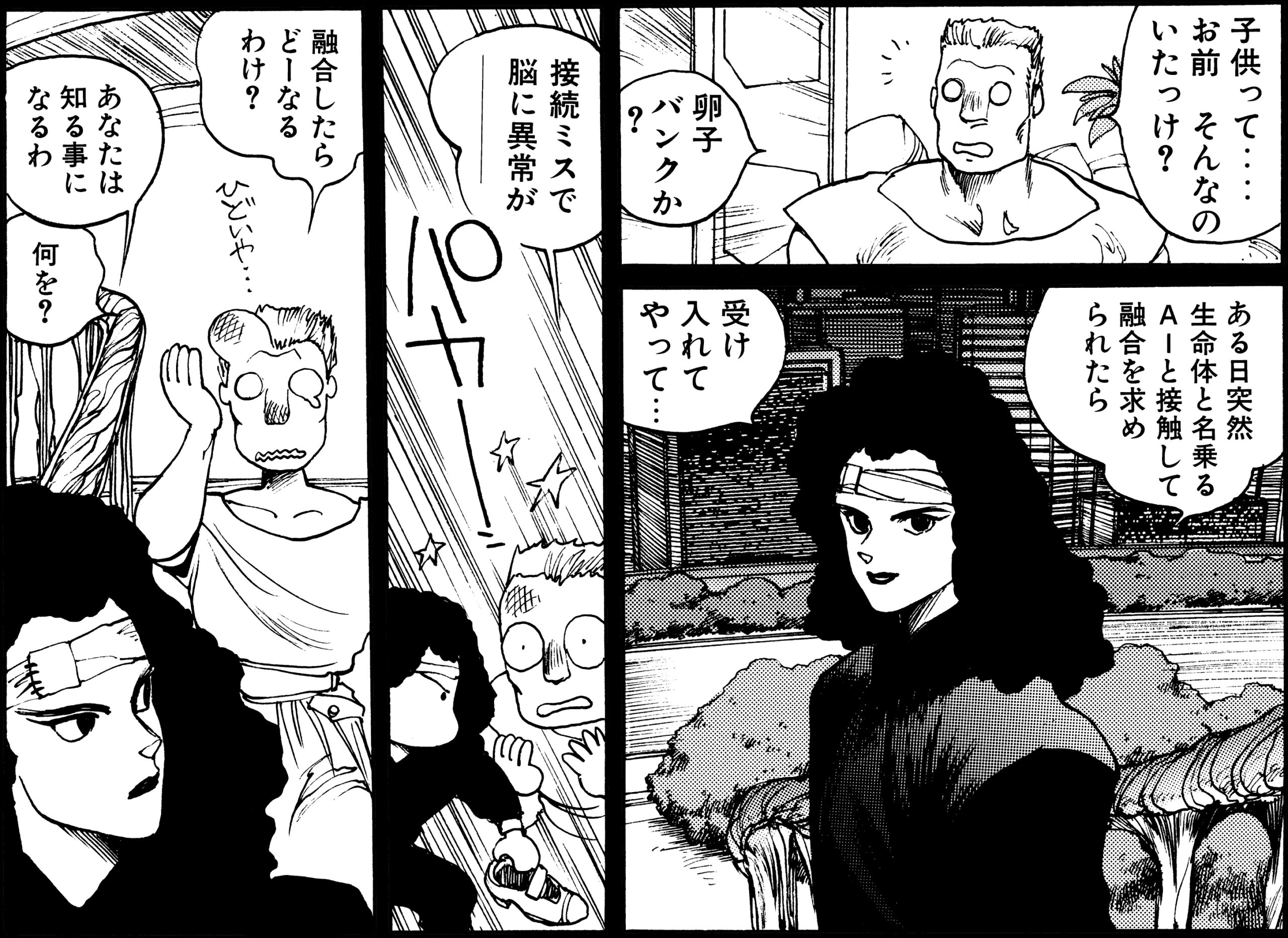
Original author Shirow Masamune talks about “Ghost in the Shell” #01
Text: Young Magazine Editorial DepartmentAlthough it isn’t unknown for Shirow Masamune to explain his works in separate books or companion pieces, he has very rarely taken interviews on his work Ghost in the Shell. While he spoke with director Mamoru Oshii for “Weekly Young Magazine” in the lead-up to the premier of the 1995 film Ghost in the Shell, that conversation centered on the film and sidestepped the manga. Even when featured in Weekly Young Magazine’s “Red Pig” column, the interview centered on work as a manga author, only lightly touching on his actual creations at the end. He was later interviewed for Glénat SA, a French publisher, but the interview was a Q&A on expression and drawing techniques that did not engage with manga stories.
In other words, this is the first in-depth interview with Shirow Masamune about the manga the Ghost in the Shell. From the factors that spurred him to write the manga to its focus on cutting-edge technology, we got to speak to the author about his works, 30 years after the fact(in a series of three interviews).
#01 Inspiration From "The Game of Life"
-I know that your works have evolved over time, and that it could be difficult to discuss only a subsection of your works. Still, would it be possible to go over what inspired you to create The Ghost in the Shell ?
Shirow Masamune (“Shirow”) In the winter of 1970, The Game of Life was invented, and the world encountered a new sort of hands-off observational computer game, or alternately a sort of automated art generator. It was what later inspired me to create the framework for my overarching universe of works in the 1980s. (This “overarching universe” refers to the world of Black Magic and Orion in which Masamune’s works continue subsequently. Of course, this also includes numerous unreleased works.) Then I announced the manga Appleseed in 1985 and was able to start releases outside Japan – in English-speaking regions – thanks to help on a variety of fronts. That was the work where I introduced a variety of full-body cyborgs and people with partially-converted organic bodies, as well as artificial satellites and public security conducting mass surveillance, artificial brain enhancements, two-way communication, and digital and analog hacking methods. I introduced all of those before I started working on The Ghost in the Shell.

From Appleseed Vol. 2 (Written by Shirow Masamune, Published by Seishinsha)
The Ghost in the Shell also wasn’t my first published work after my debut. Before that, I got an offer from Hakusensha in Tokyo, and Dominion was published. Possibly because of that publication, or maybe coincidentally at the same time, Mr. Y, an editor at Kodansha’s Young Magazine sounded me out about making something in the SF category.
-You’ve mentioned Mr. Y on the text of a book jacket before. Wasn’t the story that Katsuhiro Otomo heard about you from Hiroyuki Kitakubo, then when they met afterward, he told Mr. Y about this intriguing new manga author named Masamune Shirow?
Shirow: Mr. Y said, “Katsuhiro Otomo told me there was someone in Kansai drawing unusual manga, and I wanted to meet him.” Mr. Y asked me, “So are you here because you hate Tokyo?” My response was, “Oh, not at all! I just have a day job and family responsibilities, so I can’t get away from Kobe.” Then he asked, “Don’t you want to get under contract?” And I replied, “Those are hard on manga authors if they run over a deadline.” I remember that got a laugh from him. But he was flexible and made up a variety of contracts after that, which helped lead to getting things right for subsequent movies, games, and various merchandising. I’m definitely thankful for Mr. Y, and also for Mr. G from their Rights Management Department.
-Did you have the structure of The Ghost in the Shell in mind by the time Mr. Y sounded you out?
Shirow: Since it’s the answer to what happened 100 years before the era for Appleseed, I had an image in mind to some degree. But I was never published in a magazine to get into writing manga, even up to the present. And I’ve never been a manga author’s assistant, meaning I’ve never worked my way up in the field or been at its apex. Although they’re accepted now, the publishers didn’t see fan manga as existing at all, so no one ever went from making fan manga to being published in magazines. So, under the circumstances, they couldn’t just say, “Now from nowhere, you’re in the magazine!” So Mr. Y ordered two short stories, and I delivered them. They were light works, with the charm factors (the female protagonist and mecha and so on) toned down a bit more than in The Ghost in the Shell, even. I had finished designing The Ghost in the Shell before those short stories, and at the time, because it overlapped with the production of other works (meaning Orion), I shamelessly requested, “It’s difficult to serialize in a weekly magazine.” Sorry. Those were Gun Dancing and Pile Up, and they were published in “Young Magazine Pirate Edition.” I had several projects within the same overarching universe as The Ghost in the Shell, and submitted the one set in Japan that was closest to the current era as The Ghost in the Shell in English (its original title before its Japanese title). It had more general appeal than the other projects I had ready, and I suspected it was easier for people to get into.
-What themes did you want to portray in The Ghost in the Shell ? What did you want to express in it?
Shirow: You can do similar things with smartphones and other technologies now, but in it I was telling the story of people who were taking on new functions through technological cranial implants, up to the point of the first person ever with a functioning AI accompanying them on a micromachine network running on the neural network of their biological spinal column. I covered up to that emergence in The Ghost in the Shell (the original manga), then what might happen when such a being emerged in The Ghost in the Shell 2: Man-Machine Interface. Such individuals would proliferate once they emerged and become a general issue instead of a personal one. Everyone would seize the initiative and vie for position. The Ghost in the Shell 2: Man-Machine Interface is about the various conflicts that would arise from that. Its themes are quite different from the first volume, and I probably should have used different characters, and a different setting and title for it. I think the mix of the content for 1 and 2 ended up rather tricky.

From The Ghost in the Shell (Written by Shirow Masamune, Published by Kodansha)
-So in that context, you didn’t originally intend to write The Ghost in the Shell 1.5: Human-Error Processor ?
Shirow: Yes. Right, 1.5 was made of elements that were left out from 1. Each volume had its own gaps in what it covered, which upsets me a lot. It was just an inevitable result of my lack of technique at the time, but I also failed a bit in portraying the relationship between the brain and micromachines clearly in images.
-You say that, but I’m not sure I’d say you failed. To begin with, you created the skeleton of your overarching universe in the 80’s, and I feel like you were prescient on expressing concepts that most of the general public at the time didn’t understand – including me. Where did you get the knowledge and inspiration for that?
Shirow: There was a ton of variety in SF at the time. It was a bit saturated, but people were searching for “what comes next” in that era. So there wasn’t really a single event that moved me to create the overarching universe. I did have a sort of sense of the current in SF in general though, or a sense of which way the wind was blowing.
And I’ve always loved going to the bookstore. I had been buying “Nikkei Science” intermittently since 1974 (intermittently, since I didn’t always have money for it). Scientific publications covered new topics much earlier than the realm of casual sci-fi does (although that’s not the case anymore). Now, science that makes it into the news also shows up in the world of SF much earlier. Science and technology researchers were always discussing the directions of fields and intriguing interactions between them, and I think I just retained some of the information from that sort of conversation.
Continue to #02 Modes of Expression Born From Communication Issues
SHIROW MASAMUNE
Manga author and illustrator. Began working as a manga author and illustrator in 1982. He went on to create works including prominent examples Appleseed, Dominion (starting 1984, Seishinsha), The Ghost in the Shell (starting 1989, Kodansha), and Pandora in the Crimson Shell: Ghost Urn (starting 2012, Kadokawa). His primary works as an anime creator include Black Magic M-66. He is also active in a variety of other fields, including gaming and art collections.

